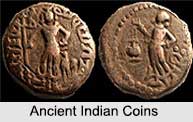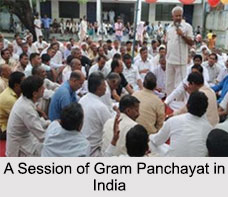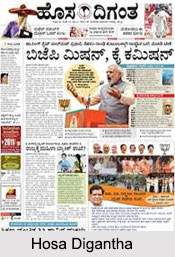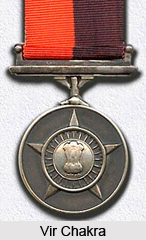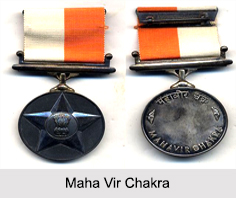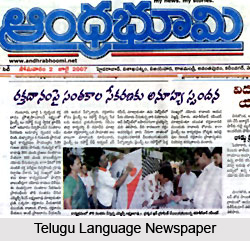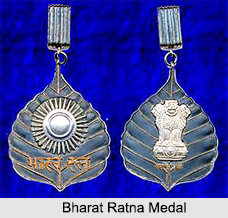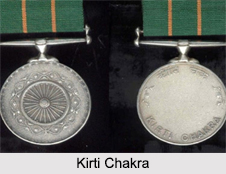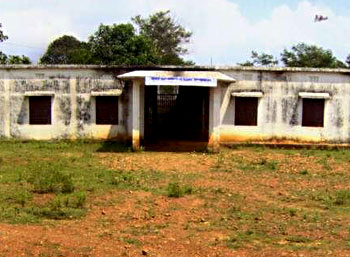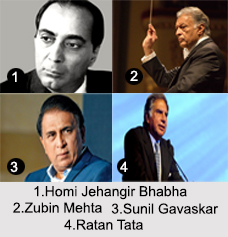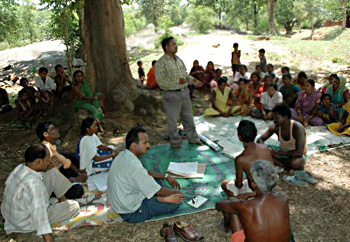 A Gram Panchayat is formed of a whole Mouja or a part of it or more than one mouja together. As a part of the rural local self government there shall be a Gram Panchayat in every village, the members of which will be elected by the voters who elect members to the State Legislative Assembly. The number of members varies between 7 and 25. The Government may also nominate two members from among women and scheduled castes if the latter two are not represented at all. The members must not be salaried persons under the government or co-operative `society. Persons convicted for crimes for more than six months are also debarred from membership.
A Gram Panchayat is formed of a whole Mouja or a part of it or more than one mouja together. As a part of the rural local self government there shall be a Gram Panchayat in every village, the members of which will be elected by the voters who elect members to the State Legislative Assembly. The number of members varies between 7 and 25. The Government may also nominate two members from among women and scheduled castes if the latter two are not represented at all. The members must not be salaried persons under the government or co-operative `society. Persons convicted for crimes for more than six months are also debarred from membership.
The members are elected for four years and there must be one sitting every month. The quorum is formed by at least one-fourth of its members or four. A Pradhan and an Upa-Pradhan are elected by the members. The Pradhan and in his absence Upa-Pradhan presides over the meetings. A secretary appointed by the government looks after the routine business of the Panchayat and is responsible to the Panchayat through the Pradhan. The primary functions of the Panchayat include preservation of public health, prevention of epidemic diseases, supply of drinking water, maintenance of roads, bridges, and tanks, management of its funds, levying of taxes and its collection, appointment and direction of Chowkidars and Dafadars, formation of Naya Panchayat, etc.
The State Governments in India may also assign other functions to it, such as, primary and vocational education, charitable dispensary and health centres, arrangement of ferry services, irrigation, grow more food campaign, rehabilitation of refugees, plantation of trees, introduction of co-operative fanning, improvement of cattle, establishment of libraries and reading rooms, sinking of tube-wells and excavation of tanks, development of cottage industries, open markets, prevention of theft and robberies, construction of hotels and rest-houses, etc.
Taxes and fees constitute its main source of income. It can levy rates and taxes on houses and lands, professions and business. Fees on litigation from Naya Panchayat, water supply, lighting of roads may be collected. Conservancy taxes may also be levied by it. The Panchayat also-derives its income from schools, dispensaries and its own properties. Its income may also be supplemented by grants from the Panchayat Samiti, Zilla Parishad and Government G rants. It may also borrow from the Government.
The Gram Panchayat may form a Court Naya Panchayat with the permission ot the Government. The court is constituted by five Vicharaks who are elected by the Gram Panchayat. A Pradhan Vicharak is elected from among its members to preside over its sessions. Three members form the quorum. It tries petty Civil and Criminal cases. Only in cases of faulty judgment given by the Naya Panchayat appeals may be made in criminal cases to the Sub-divisional Judicial Magistrate or District Session Judge and in civil cases to the Munsif who can set aside the decisions of the Naya Panchayat and order a retrial.







